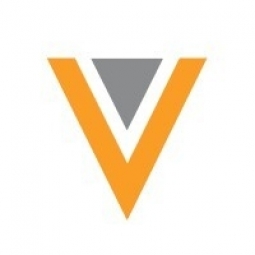适用行业
- 水泥
- 教育
用例
- 人员跟踪与监控
- 时间敏感网络
服务
- 系统集成
- 培训
关于客户
Exact Sciences 是一家位于美国威斯康星州麦迪逊市的生物技术公司。该公司专注于分子诊断,为癌症的早期检测提供非侵入性、患者友好的筛查技术。该公司的使命是将科学与技术结合起来,创造革命性的产品,帮助更早、更准确地检测癌症。该公司面临医疗、法律和监管 (MLR) 审查流程的挑战,该流程效率低下且缺乏统一的技术解决方案。该公司寻求简化这一流程并实施可扩展的技术解决方案。
挑战
Exact Sciences 是一家分子诊断公司,正在努力解决低效的医疗、法律和监管 (MLR) 审查流程。该公司在其各个业务部门使用不同的技术进行 MLR 审查,但没有部署企业解决方案或集成。缺乏统一性和整合性导致效率低下并减慢了审查和批准过程。该公司还缺乏专门的角色来管理国土资源部审查流程,通常由高级副总裁承担这项任务。我们面临的挑战是简化和优化 MLR 审核流程、实施可扩展的技术解决方案并改变围绕 MLR 的公司文化。
解决方案
Exact Sciences 商业服务总监 Chris Larsen 承担了改进 MLR 审查流程的任务。她首先评估现有流程,从参与人员到内容如何从一个系统转移到另一个系统。在考虑了各种供应商之后,她选择 Veeva Vault PromoMats 作为技术解决方案,因为它能够满足所有要求并随业务扩展。该实施是分阶段推出的,国内设备先于国际设备上线。这种分阶段的方法允许根据反馈和观察进行调整和改进。除了技术实施之外,拉森还进行了重大的角色转变。她介绍了专门的角色来管理 MLR 审核流程并将内容放入 Vault PromoMats。她还鼓励高层领导将国土资源部审查任务委托给他们的团队,从而扩大审查流程。
运营影响

Case Study missing?
Start adding your own!
Register with your work email and create a new case study profile for your business.
相关案例.

Case Study
System 800xA at Indian Cement Plants
Chettinad Cement recognized that further efficiencies could be achieved in its cement manufacturing process. It looked to investing in comprehensive operational and control technologies to manage and derive productivity and energy efficiency gains from the assets on Line 2, their second plant in India.

Case Study
Revolutionizing Medical Training in India: GSL Smart Lab and the LAP Mentor
The GSL SMART Lab, a collective effort of the GSL College of Medicine and the GSL College of Nursing and Health Science, was facing a challenge in providing superior training to healthcare professionals. As clinical medicine was becoming more focused on patient safety and quality of care, the need for medical simulation to bridge the educational gap between the classroom and the clinical environment was becoming increasingly apparent. Dr. Sandeep Ganni, the director of the GSL SMART Lab, envisioned a world-class surgical and medical training center where physicians and healthcare professionals could learn skills through simulation training. He was looking for different simulators for different specialties to provide both basic and advanced simulation training. For laparoscopic surgery, he was interested in a high fidelity simulator that could provide basic surgical and suturing skills training for international accreditation as well as specific hands-on training in complex laparoscopic procedures for practicing physicians in India.

Case Study
IoT platform Enables Safety Solutions for U.S. School Districts
Designed to alert drivers when schoolchildren are present, especially in low-visibility conditions, school-zone flasher signals are typically updated manually at each school. The switching is based on the school calendar and manually changed when an unexpected early dismissal occurs, as in the case of a weather-event altering the normal schedule. The process to reprogram the flashers requires a significant effort by school district personnel to implement due to the large number of warning flashers installed across an entire school district.

Case Study
Digital Transformation of Atlanta Grout & Tile: An IoT Case Study
Atlanta Grout & Tile, a Tile, Stone & Grout restoration company based in Woodstock, Georgia, was facing challenges with its traditional business model. Despite steady growth over the years, the company was falling behind the web revolution and missing out on the opportunity to tap into a new consumer base. They were using independent software from different vendors for each of their department information and workforce management. This resulted in a lot of manual work on excel and the need to export/import data between different systems. This not only increased overhead costs but also slowed down their response to clients. The company also had to prepare numerous reports manually and lacked access to customer trends for effective business decision-making.

Case Study
Implementing Robotic Surgery Training Simulator for Enhanced Surgical Proficiency
Fundacio Puigvert, a leading European medical center specializing in Urology, Nephrology, and Andrology, faced a significant challenge in training its surgical residents. The institution recognized the need for a more standardized and comprehensive training curriculum, particularly in the area of robotic surgery. The challenge was underscored by two independent studies showing that less than 5% of residents in Italian and German residency programs could perform major or complex procedures by the end of their residency. The institution sought to establish a virtual reality simulation lab that would include endourological, laparoscopic, and robotic platforms. However, they needed a simulator that could replicate both the hardware and software of the robotic Da Vinci console used in the operating room, without being connected to the actual physical console. They also required a system that could provide both basic and advanced simulation training, and a metrics system to assess the proficiency of the trainees before they performed surgical procedures in the operating theater.








